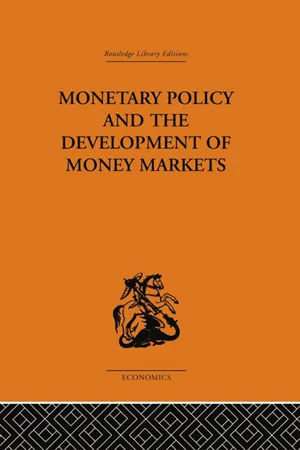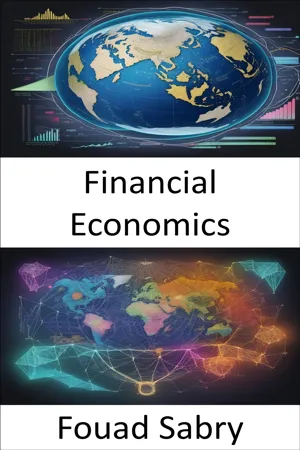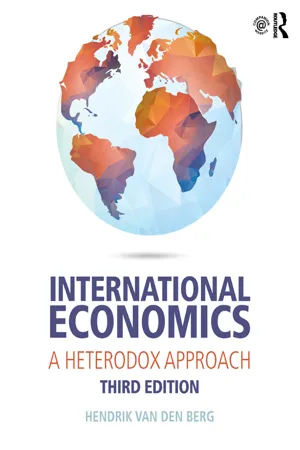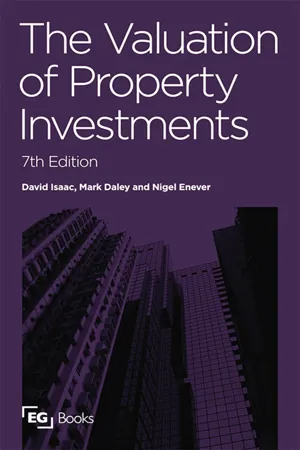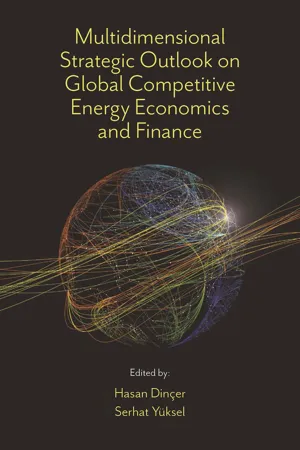Economics
Financial Investment
Financial investment refers to the allocation of funds into assets with the expectation of generating income or profit. This can include purchasing stocks, bonds, real estate, or other financial instruments. The goal of financial investment is to increase wealth over time through capital appreciation, dividends, or interest payments.
Written by Perlego with AI-assistance
Related key terms
6 Key excerpts on "Financial Investment"
- J.S.G. Wilson(Author)
- 2013(Publication Date)
- Routledge(Publisher)
4However, for purposes of clarity, we must also distinguish between real investment and Financial Investment. If we buy shares in a corporate enterprise, or government securities, or lend money against a mortgage, or fix money at a bank in the form of a time deposit, we make a Financial Investment. If, on the other hand, we build a house or a factory, we make a real investment. As a rule, such real investments are measured in money terms and Financial Investment is undertaken with the object of making a real investment, but it is possible to conceive of one without the other. If a man applies his own labour to the resources of nature for the purpose of building a house, real investment would be the result, but, since no money was involved for labour and materials, this real investment would not be matched by any Financial Investment. Conversely, it is possible to invest money in a financial sense (e.g. by ‘investing’ money at interest as a time deposit in a bank) without any corresponding real investment being undertaken. Normally, of course, a bank functions in some sense as an intermediary and lends corresponding amounts of money (or money claims) to entrepreneurs for the purpose of undertaking real investment and this may then be regarded as the counterpart of the Financial Investment undertaken by the depositor. In times of cyclical depression, however, we have sometimes witnessed a tendency for interest-bearing deposits to rise, while bank advances have been falling. In this case, the difference between the real investment and Financial Investment magnitudes flows into hoards—i.e. money has been withdrawn from current expenditure on consumption without being applied to the production of future goods. As a result, there is a building up of inactive money holdings, with important repercussions on the level of real investment. So that, although there may not always be a matching of money flows with flows of real resources, in general there is a most intimate connection between them. Indeed, it is the money flows which, in a sense, both activate and determine the direction of flow of real resources.- eBook - ePub
The Long and the Short of It (International edition)
A guide to finance and investment for normally intelligent people who aren't in the industry
- John Kay(Author)
- 2016(Publication Date)
- Profile Books(Publisher)
When people discuss investment in bars and lunch rooms, they generally mean investment in securities – stocks and shares, bonds and deposits. But investment finds another meaning in the creation of the physical infrastructure of the economy.Companies invest in plant and machinery. They must finance inventories and pay for work in progress. They operate from offices and shops. The government invests in schools and hospitals, bridges and roads. People used to make a sharper distinction than they do now between savings – putting money aside for later – and investment – putting that money to use. But, perhaps significantly, these words have lost this differentiated meaning. I’ll talk instead about Financial Investment and productive investment. The return on Financial Investment must, ultimately, be generated by the return on productive investment. The quest for financial perpetual motion machines is unending, but the basic principle of bookkeeping – money that goes out equals money that comes in – is as immutable as the natural laws of thermodynamics. Financial Investments fund physical investments, and the two principal means by which they do so are shares and loans.A stock or share (an equity) gives you a portion, for better or worse, of earnings and realisations from the productive activities of a company. A secured loan – such as a mortgage – gives the lender the right to seize some or all of the borrower’s assets if the borrower fails to pay agreed interest and the original money lent. Unsecured loans give the lender only a legal claim against the borrower for payment, and that claim will be met only after secured creditors have realised the value of the assets pledged to them.1Physical objects, such as offices and machinery, are not the only productive assets. Many of the assets of modern companies are intangible. Companies own brands, and build reputations. They acquire licences and intellectual property, and they invest in internal systems and organisational structures. These assets earn a return, just as plant and buildings earn a return; many such assets can be bought and sold, and can even provide security for loans. - eBook - ePub
Financial Economics
Empowering Wealth, a Journey Into Financial Economics
- Fouad Sabry(Author)
- 2023(Publication Date)
- One Billion Knowledgeable(Publisher)
Chapter 1: Financial economics
Financial economics is the subfield of economics characterized by a "focus on monetary activities" in which "money of one form or another is likely to appear on both sides of a trade." It focuses on the interrelationships of financial variables, such as share prices, interest rates, and exchange rates, as opposed to real economy variables. It focuses on asset pricing and corporate finance; the first from the perspective of capital providers, i.e. investors, and the second from the perspective of capital users. Thus, it provides the theoretical foundation for the majority of finance.The topic focuses on "the allocation and deployment of economic resources across space and time in an uncertain environment." It focuses on decision-making under uncertainty in the context of financial markets, the resulting economic and financial models and principles, and the derivation of testable or policy-relevant implications from acceptable assumptions. Thus, it also encompasses a formal investigation of the financial markets themselves, including market microstructure and market regulation. Microeconomics and decision theory serve as its foundations.Financial econometrics is the subfield of financial economics that uses econometric methods to parameterize the identified relationships. Mathematical finance is related to financial economics in that it derives and expands the mathematical or numerical models proposed by financial economics. In contrast to the microeconomic focus of financial economics, monetary economics is primarily macroeconomic in nature.The study of how rational investors would apply decision theory to investment management is the focus of financial economics. Thus, the subject is based on the fundamentals of microeconomics and derives several important conclusions for the application of decision making under uncertainty to financial markets. The fundamental theorem of asset pricing, which provides the conditions for arbitrage-free asset pricing, is derived from the underlying economic logic. The auxiliary formulae yield directly. - eBook - ePub
International Economics
A Heterodox Approach
- Hendrik Van den Berg(Author)
- 2016(Publication Date)
- Routledge(Publisher)
PART IV International Investment and FinanceThis part of the textbook examines the second and third components of international economics: international investment and international finance. Note that there is a difference between international investment and international finance.International investment is the process of engaging in the sale or acquisition of physical and/or human capital across borders. International finance involves the purchase and sale of financial assets across countries. Financial assets bridge the gap in time between intertemporal transactions in which a payment or payments at one point in time is/are linked to opposite payment(s) at some other point(s) in time. International financial flows may be related to international investment, as when a transnational corporation transfers funds to another country to purchase a foreign firm or when a foreign government borrows overseas to finance an infrastructure project. But often international lending and international investment are separate processes, with different costs, benefits, and potential destabilizing effects.Many economists feel that, by combining the static models of international investment with models of economic growth, a strong case can be made for policies that encourage international investment. From a heterodox perspective, however, there are many issues to discuss that go well beyond the orthodox models of international investment and economic growth. International investment shifts the factor endowments across countries, which affects international trade. And, international finance creates creditors and debtors with different interests. Also, the accumulation of international debt can cause financial instability and massive economic damage, as the recent 2007–2009 Great Recession - eBook - ePub
- Nigel Enever, David Isaac, Mark Daley(Authors)
- 2014(Publication Date)
- Estates Gazette(Publisher)
Part 1 The Economic and Legal FrameworkPassage contains an image
1 Investment
DOI: 10.4324/9781315040813-1Investment in any form involves the acquisition of an asset by way of a capital sum in return for future income flows and in many cases, such as property and shares, the expectation of the capital growth of the asset. This book examines Financial Investment in existing property to the exclusion of assets created by property development.Property investment is only one of several opportunities open to investors and since all investment markets rise and fall in value at different times throughout the economic cycle, it is necessary to consider the comparison of property investments, not only one with another, but also with other forms of investment.Investment Markets
Different types of investment have different characteristics and may appeal to different types of investor and investor preference may change with varying economic conditions. For example, in uncertain foreign exchange markets, investors may look to commodities, such as gold, which are considered to be a “safe haven” at such times.Investments in property can be subdivided according to type and size, such as small houses at one extreme, and multi-million pound office investments at the other. It can be subdivided according to location: a small industrialist may limit his demand for factory space to a particular area, for example, whereas a pension fund acquiring industrial property for its investment portfolio may be relatively indifferent to the part of the country or region in which the property is located. A particular property may, according to its type, attract demand at a local, a national or even an international level.Types of Investment
The commonest form of investments include: stocks and shares, which are bought and sold on the Stock Exchange; loans to companies (debentures) government securities; insurance policies; unit trusts; property; works of art; durable articles bought for use; commodities and so on. The term “property”, as used in the book, concerns freehold and leasehold interests in land and buildings, or landed property as it is sometimes known. The significant increase in commercial and residential property prices in the early part of the 21st century until 2008, when the market fell dramatically, also attracted many small property investors. These investors acquired portfolios of residential and tertiary commercial property for letting, often as a substitute for investment in more traditional funds, given the good prospects for capital growth through this period. The rising interest in property investment from smaller investors had increased since the mid/late 1990s, as many saw opportunities to diversify and also participate in the rapid growth in asset values. - Hasan Dinçer, Serhat Yüksel, Hasan Dinçer, Serhat Yüksel(Authors)
- 2022(Publication Date)
- Emerald Publishing Limited(Publisher)
Chapter 4
Relationship between Energy Investment and Economic Growth
Fe Amor Parel GudmundssonAbstract
A retrospective study of the interdependence of financial development and energy investment can show us that the opinions of scientists have changed quite dynamically in previous centuries regarding the role of the financial sector in the economy. This is primarily due to technological innovations and economic transformations. At the same time, it is worth mentioning the main approaches and directions prevailing in economics over the past time. The founder of the theory that financial markets have a positive impact on the development of the economy is the English economist Walter Bagehot. In his work, published in 1873, the author analyzes the economic processes of that time and, as a result, gets a general description of the ongoing interactions between the financial and real sectors. His most important conclusion for us is that loan capital, according to the economist, contributes to the expansion of production.Keywords: Energy investment; financial markets; development; economic growth; energy economics; technological improvements; economic transformations; economic development; financial development; energy projects4.1 Introduction
It is unused until a certain area does not become sufficiently profitable, after which it can be used for a long period. Loan capital flows into this area and into related industries. This provides financing for the most profitable industries.As a result, capital is transferred along the chain between economic entities and the overall level of economic development increases. These considerations can be called early ideas about the multiplier effect, as well as the direct role of the financial system in this process (Zhou, Zhou, Yüksel, Dinçer, & Uluer, 2020
Index pages curate the most relevant extracts from our library of academic textbooks. They’ve been created using an in-house natural language model (NLM), each adding context and meaning to key research topics.
